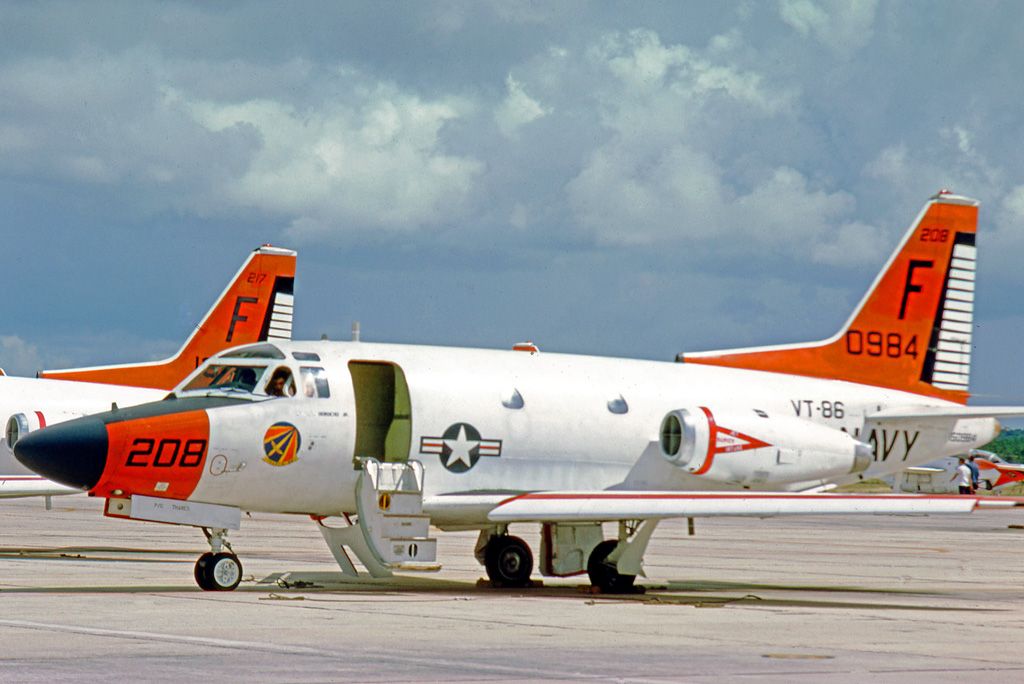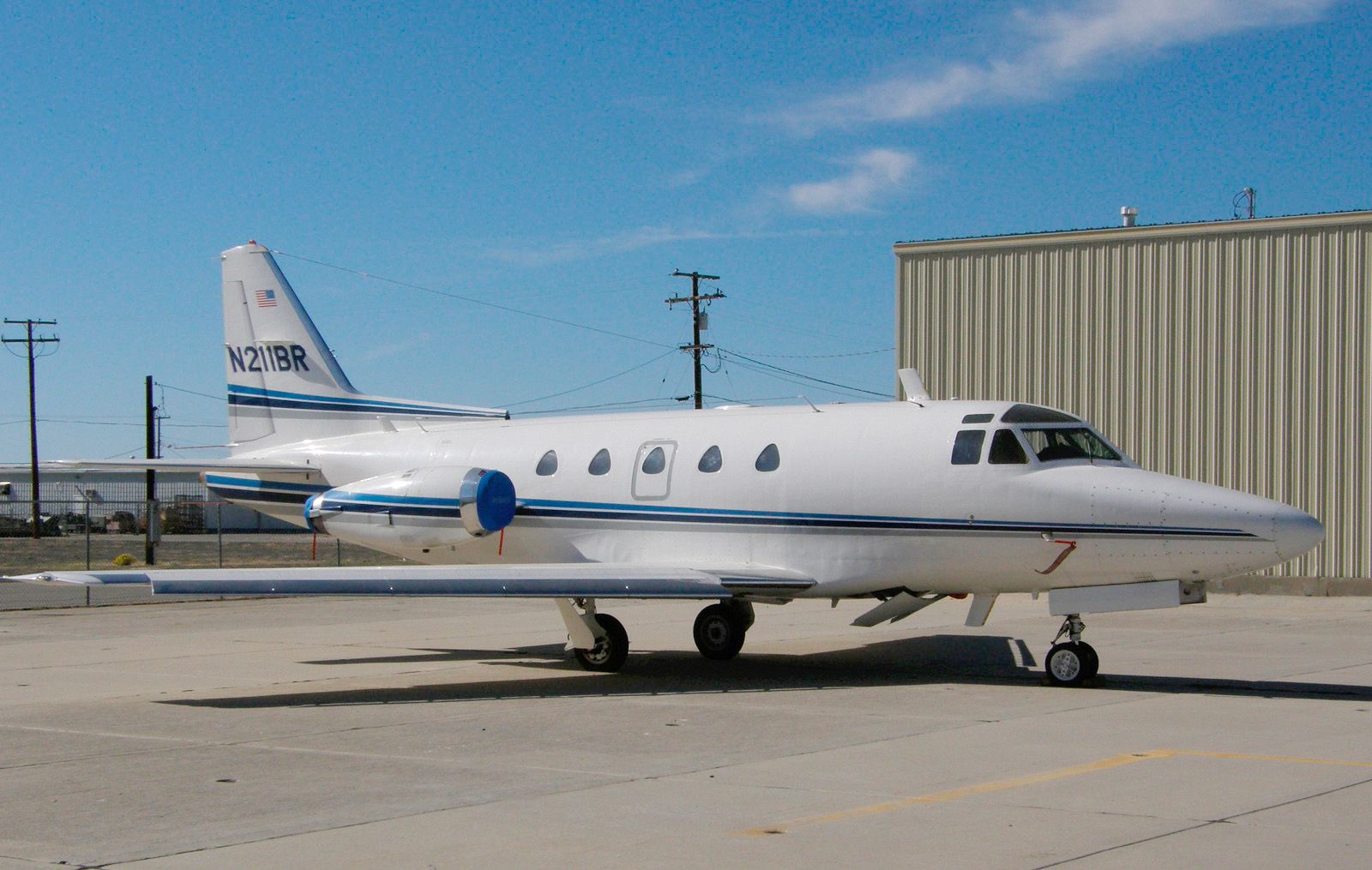Originally built to a military standard, the Sabreliner 40 business jet has exceptional speed and range and can land at most mid-size airports. Also, because of its aerodynamic body design, the effects of turbulence are reduced, which helps guarantee passengers a bump-free ride.
Following a request from the United States Air Force for a plane for its Utility Trainer Experimental (UTX) program, North American Aviation began designing an aircraft that would become the Sabreliner. They chose the name Sabreliner because the wing and tail of the plane were similar to those of the North American F-86 Sabre fighter jet.
A military and civilian version of the plane was built
Building two versions of the plane, one for the Air Force and one for private buyers, the civilian variant made its first flight on September 16, 1958. The aircraft later received its Federal Aviation Administration (FAA) airworthiness certificate in April 1963.
Over a decade later, North American merged with Rockwell Standard to become Rockwell International. In 1976 the new aviation company asked Raisbeck Engineering to redesign the Sabreliner's wings. The result was Raisbeck Mark V, a supercritical wing designed to reduce wave drag.
The military used the T-39 for training pilots
Military versions of the aircraft, designated as T-39 Sabreliners, entered service with the United States Air Force, Navy, and Marine Corps. During the Vietnam War, T-39s replaced Martin B-57 Canberras used to transport photographic reconnaissance film from outlying bases to Tan Son Nhut Air Base in Saigon. The naval version of the plane, the T-39D, was fitted with the same radar as the McDonnell F3H-1 Demon and used as a training aircraft.
The Sabreliner needs two pilots to fly it and can carry as many as seven passengers, depending on how it is configured. In its civilian role, the Sabreliner is the only business jet rated for aerobatics. As the aircraft aged and the military began to retire them, several T-39s were converted for civilian use.
Osama bin Laden secretly purchased a Sabreliner
Al-Qaeda leader Osama bin Laden secretly purchased a former military T-39 that had been converted for civilian use at Van Nuys Airport (VNY) in Southern California. The Saudi Arabian terrorist leader got Egyptian pilot Essam al-Ridi to purchase the plane, saying it was for a wealthy Egyptian family.
Al-Ridi then delivered the aircraft to Khartoum, Sudan, where Osama bin Laden was exiled. The aircraft was subsequently used to transport Al-Qaeda operatives to Kenya. The plan was to have them entice Muslim tribes to attack American troops in Somalia. In October 1994, the plane overran the runway at Khartoum International Airport (KRT) and crashed into a sand dune. The aircraft was so severely damaged that it made no sense to repair it, and it was left abandoned.
Want answers to more key questions in aviation? Check out the rest of our guides here.
Specifications and general characteristics of the North American/Rockwell Sabreliner
- Crew: Two
- Capacity: five–seven passengers
- Length: 44 feet
- Wingspan: 44 feet 6 inches
- Height: 16 feet
- Wing area: 342.1 square feet
- Empty weight: 9,257 lbs
- Max takeoff weight: 17,760 lbs
- Powerplant: 2 × Pratt & Whitney J60-P-3 turbojet, 3,000 lbf thrust each
Performance
- Maximum speed: 550 mph
- Cruise speed: 435 500 mph
- Range: 2,500 miles
- Service ceiling: 40,000 feet
During its production, between 1959 and 1982, more than 800 Sabreliners were built.



